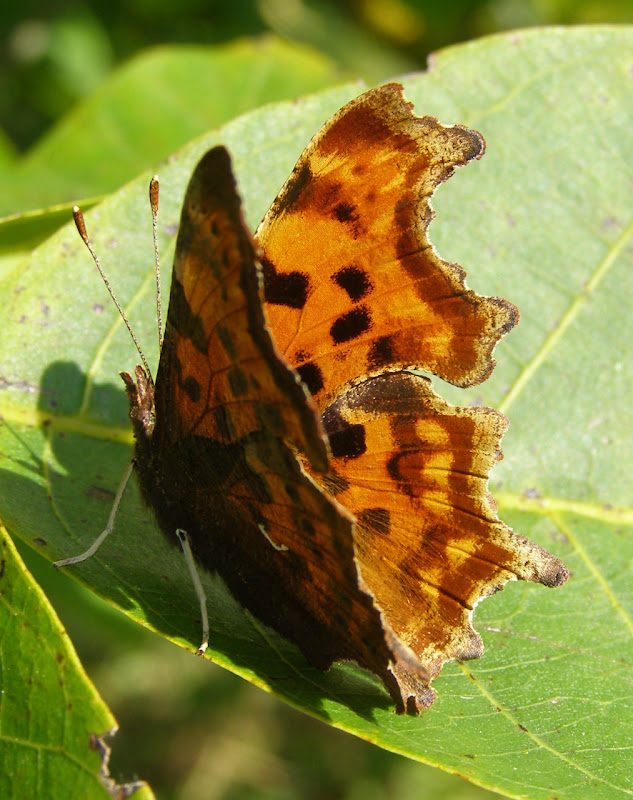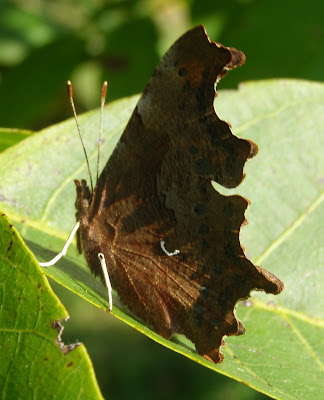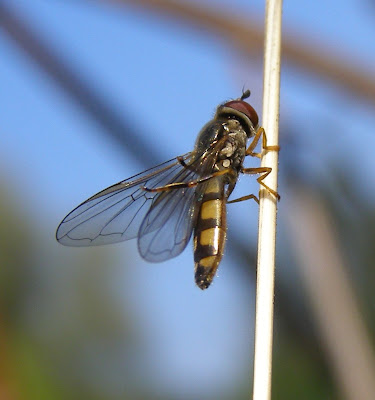Comma Butterfly
 Sun 2008-09-21
Sun 2008-09-21 A comma butterfly (Polygonia c-album), so-called because of the little white C-shape or 'comma' on the underside of its wings ('c-album' being Latin for 'white-C'). Photos take in Reading University grounds, Reading, UK, on 2008-09-21.
Butterflies of this species that hatch early in the summer and which will breed and die in the same year, tend to have lighter underwings. Those, like this one, which hatch later in the summer and which overwinter and breed the following year, tend to have darker underwings.
 Insects
Insects 




